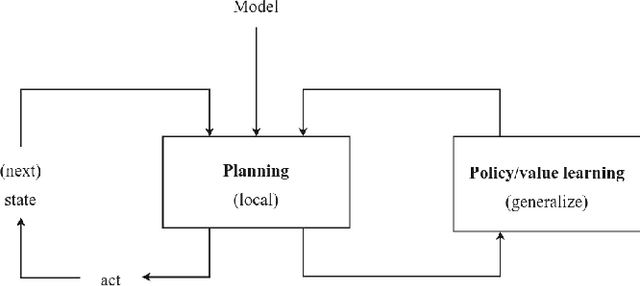Anna Deichler
Incorporating Spatial Awareness in Data-Driven Gesture Generation for Virtual Agents
Aug 07, 2024Abstract:This paper focuses on enhancing human-agent communication by integrating spatial context into virtual agents' non-verbal behaviors, specifically gestures. Recent advances in co-speech gesture generation have primarily utilized data-driven methods, which create natural motion but limit the scope of gestures to those performed in a void. Our work aims to extend these methods by enabling generative models to incorporate scene information into speech-driven gesture synthesis. We introduce a novel synthetic gesture dataset tailored for this purpose. This development represents a critical step toward creating embodied conversational agents that interact more naturally with their environment and users.
Fake it to make it: Using synthetic data to remedy the data shortage in joint multimodal speech-and-gesture synthesis
Apr 30, 2024Abstract:Although humans engaged in face-to-face conversation simultaneously communicate both verbally and non-verbally, methods for joint and unified synthesis of speech audio and co-speech 3D gesture motion from text are a new and emerging field. These technologies hold great promise for more human-like, efficient, expressive, and robust synthetic communication, but are currently held back by the lack of suitably large datasets, as existing methods are trained on parallel data from all constituent modalities. Inspired by student-teacher methods, we propose a straightforward solution to the data shortage, by simply synthesising additional training material. Specifically, we use unimodal synthesis models trained on large datasets to create multimodal (but synthetic) parallel training data, and then pre-train a joint synthesis model on that material. In addition, we propose a new synthesis architecture that adds better and more controllable prosody modelling to the state-of-the-art method in the field. Our results confirm that pre-training on large amounts of synthetic data improves the quality of both the speech and the motion synthesised by the multimodal model, with the proposed architecture yielding further benefits when pre-trained on the synthetic data. See https://shivammehta25.github.io/MAGI/ for example output.
Diffusion-Based Co-Speech Gesture Generation Using Joint Text and Audio Representation
Sep 11, 2023Abstract:This paper describes a system developed for the GENEA (Generation and Evaluation of Non-verbal Behaviour for Embodied Agents) Challenge 2023. Our solution builds on an existing diffusion-based motion synthesis model. We propose a contrastive speech and motion pretraining (CSMP) module, which learns a joint embedding for speech and gesture with the aim to learn a semantic coupling between these modalities. The output of the CSMP module is used as a conditioning signal in the diffusion-based gesture synthesis model in order to achieve semantically-aware co-speech gesture generation. Our entry achieved highest human-likeness and highest speech appropriateness rating among the submitted entries. This indicates that our system is a promising approach to achieve human-like co-speech gestures in agents that carry semantic meaning.
Mechanical Chameleons: Evaluating the effects of a social robot's non-verbal behavior on social influence
Sep 02, 2021


Abstract:In this paper we present a pilot study which investigates how non-verbal behavior affects social influence in social robots. We also present a modular system which is capable of controlling the non-verbal behavior based on the interlocutor's facial gestures (head movements and facial expressions) in real time, and a study investigating whether three different strategies for facial gestures ("still", "natural movement", i.e. movements recorded from another conversation, and "copy", i.e. mimicking the user with a four second delay) has any affect on social influence and decision making in a "survival task". Our preliminary results show there was no significant difference between the three conditions, but this might be due to among other things a low number of study participants (12).
Think Too Fast Nor Too Slow: The Computational Trade-off Between Planning And Reinforcement Learning
May 15, 2020



Abstract:Planning and reinforcement learning are two key approaches to sequential decision making. Multi-step approximate real-time dynamic programming, a recently successful algorithm class of which AlphaZero [Silver et al., 2018] is an example, combines both by nesting planning within a learning loop. However, the combination of planning and learning introduces a new question: how should we balance time spend on planning, learning and acting? The importance of this trade-off has not been explicitly studied before. We show that it is actually of key importance, with computational results indicating that we should neither plan too long nor too short. Conceptually, we identify a new spectrum of planning-learning algorithms which ranges from exhaustive search (long planning) to model-free RL (no planning), with optimal performance achieved midway.
 Add to Chrome
Add to Chrome Add to Firefox
Add to Firefox Add to Edge
Add to Edge